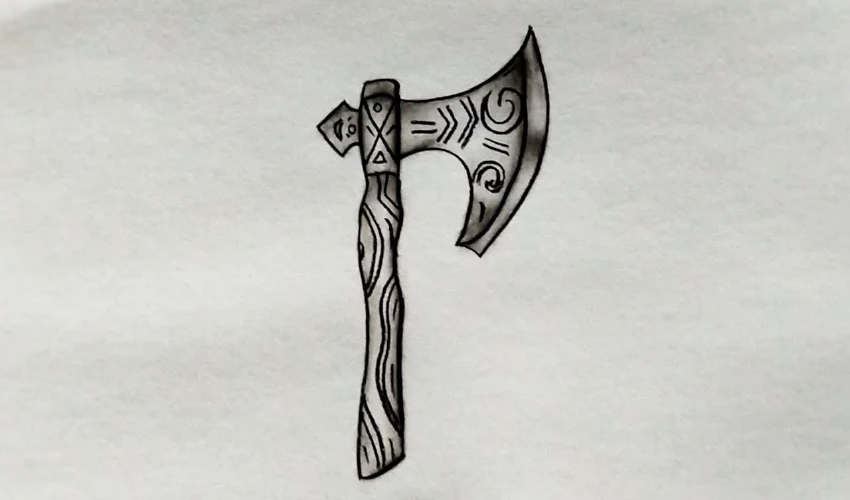
The History of the Viking Axe
Introduction
The Viking axe is a symbol of strength, resilience, and the rich cultural heritage of the Norse seafarers. This weapon was more than just a tool of war; it was integral to daily life and craftsmanship. Exploring its history provides insight into how this tool evolved from a utilitarian implement to a legendary weapon that continues to captivate enthusiasts today.
Early Origins
The origins of the Viking axe trace back to the early Iron Age. The Norse people, known for their seafaring abilities, crafted their tools and weapons from the limited resources available to them. The axe was a primary tool used for woodcutting, an essential activity for building ships and homes, symbolizing both survival and practicality.
The Axe as a Weapon of War
Around the 8th century, the Viking axe evolved from a simple wood-cutting tool into a weapon of choice on the battlefield. This transformation occurred as Viking raids became more common, requiring effective weapons that could be wielded efficiently during combat. The traditional battle axe varied in size and design, ranging from one-handed to large two-handed versions like the Dane axe, which featured a long handle and a broad blade for maximum impact.
Types of Viking Axes:
- Hand Axes: Lightweight and easy to maneuver, ideal for single-hand combat and often used alongside a shield.
- Dane Axes: Also known as the broad axe, these featured long handles and were wielded by skilled warriors for powerful strikes.
- Bearded Axes: Characterized by an extended lower part of the blade, allowing for hooking and gripping, which proved advantageous in battle.
Design and Craftsmanship
The Viking axe’s design showcased both functionality and art. Early axes were simple, but as craftsmanship developed, axes became more ornate. Blades often featured engravings of Norse symbols and motifs, reflecting the deep spiritual beliefs of the Vikings. The materials used ranged from iron to steel, with craftsmanship involving careful forging techniques to enhance durability and sharpness.
The handle, or haft, was typically made of wood like ash or elm, chosen for its flexibility and strength. This allowed warriors to wield the axe effectively in both swift and forceful movements.
The Role of the Axe in Viking Society
Beyond warfare, the axe was a staple in Viking homes, serving as a multipurpose tool for chopping wood, hunting, and crafting. This dual-purpose nature reinforced the axe’s status as an indispensable part of Viking life. Additionally, owning an axe symbolized social status and identity; higher-ranking individuals often possessed axes adorned with decorative carvings and precious metals.
The Axe in Mythology and Symbolism
The axe held significant meaning in Norse mythology. It was associated with gods and legendary figures. For instance, the god Thor, although more famously wielding a hammer, embodied the strength and ferocity that the axe symbolized. Stories and sagas often depicted warriors using axes in their conquests, reinforcing the weapon’s legendary status.
The bearded axe, in particular, is a common motif in art and stories, highlighting its importance in both historical and mythological contexts. It represented power, authority, and the unyielding spirit of the Vikings.
The Viking Age and Legacy
The Viking Age (late 8th to early 11th century) marked the height of the axe’s prominence. During this era, Vikings expanded their territories through raids, trade, and settlements across Europe. The axe was not only a tool of conquest but a symbol of the Viking way of life. This period left behind a rich legacy of folklore, artifacts, and historical records detailing the use of the axe.
Archaeological findings, such as the discovery of burial mounds, reveal that axes were commonly placed alongside the deceased as part of their grave goods. This practice underscores the significance of the axe not just as a weapon, but as a valued possession that accompanied individuals into the afterlife.
Modern Interpretation and Influence
Today, the Viking axe remains a potent symbol in popular culture, appearing in books, films, and television series that romanticize Viking heritage. It is also celebrated in historical reenactments and museums that showcase its craftsmanship and role in Norse society. The fascination with the Viking axe continues among collectors, historians, and modern-day enthusiasts, highlighting its timeless allure.
Conclusion
The history of the Viking axe encapsulates more than just its use as a weapon—it embodies the spirit of innovation, survival, and cultural identity of the Viking people. From its humble beginnings as a tool for daily tasks to its status as a feared and respected weapon on the battlefield, the Viking axe represents a remarkable chapter in history that continues to inspire admiration and curiosity to this day.
